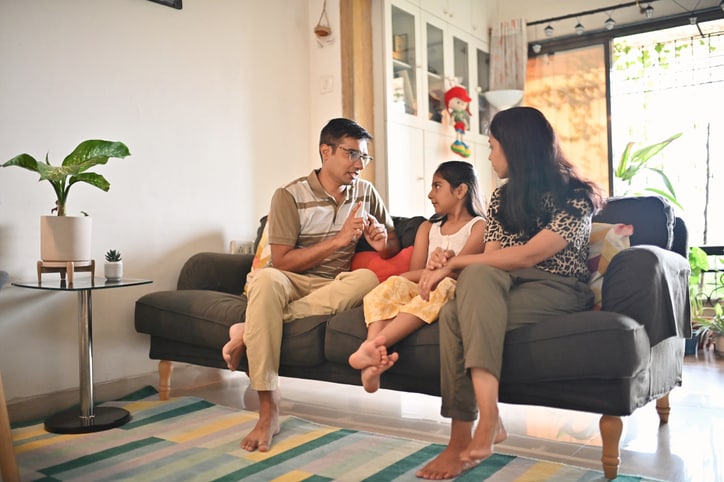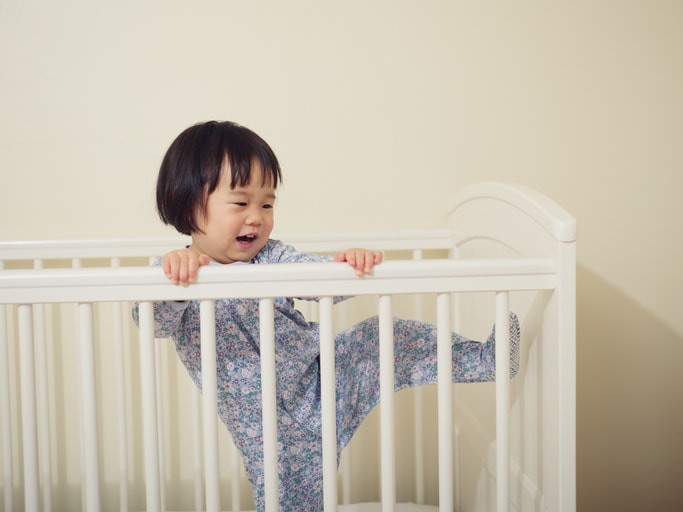Prior to full-time parenting, I had a vision of life as a stay-at-home mom: I’d effortlessly balance housework and child rearing, ticking off chores while engaging my child in one educational activity after another, spending my free time reading books on parenting while canning homemade jam. Oh, and somehow in this fantasy, I’d still maintain my career as a writer.
Instead, by the end of my first year as a full-time parent, I found myself sitting fully dressed in our bathtub sobbing because I’d left my phone at the coffee shop again. This time, it was after I accidentally erased a writing assignment I’d been working on all afternoon when my then-14-month-old woke up screaming from his nap.
Burned out and depressed, I reluctantly admitted I needed help. Our son was soon to join the some 12.5 million children under age 5 who are in some type of regular child care arrangement, but what kind of care was best for our family?
Here are the steps I took to answer that question. But first, some facts: When it comes to the “day care versus nanny” decision, there is no one right choice. According to a study conducted by the National Institute for Child Health and Human Development, children under age 3 experience less stress, less illness and less behavioral problems with in-home care. But a quality day care center, they say, is better than a disinterested nanny (or a distracted stay-at-home mom). Whether nanny, parent, day care or another option, what matters most is the quality of the care being provided. And even those researchers concede that whatever the arrangement, it has to work for your family.
First, I considered my options
Our first step to finding care was exploring our child care options. As I did my research, I realized the obvious choice between day care and nanny broke down even further. For starters, there are corporate day care centers that offer full- or part-time care. They often set the hours of attendance, and offer an organized program that may include your child’s naps and meals. There were also in-home day cares, which usually take place in the proprietor’s private residence. Often the provider watches a handful of children, sometimes in addition to their own.
And then there’s a nanny, who comes to your home and focuses directly on your child. They may do extra, child-related chores, such as folding laundry or tidying the playroom. There’s also the option of hiring a mother’s helper if you’re planning to stay home with your child but want an extra set of hands.
I needed child care while I focused on my work, so the option of hiring a mother’s helper was out. Everything else remained on the table.
I determined the difference in cost
I wish my only question was “what’s best for my baby?” Instead, the cost of child care was a major consideration, as I imagine it is for most.
In most cities, day care is a lot less expensive than private care. In other communities — parts of New York City, for instance — it’s the opposite. To start, I made a list of the day care centers and in-home facilities in my neighborhood and made note of their hourly rate. In my neighborhood, in-home day cares were slightly cheaper than the average going rate for a nanny. The price of a nanny and the top-rated day care center was about the same.
I considered convenience
My husband and I can both work from home and only really needed two to three hours of care for our child per day (in addition to our son’s naps). Our schedules change each week and so, ideally, I hoped for some flexibility.
When it came to convenience, a nanny won, hands down. In the best of circumstances, a nanny would be there when we needed her, and she’d come right to us. We don’t have a car, so the time and money it took to travel to and from the facility was another consideration. The closest day care center was a 20-minute bus ride. The closest in-home facility was a half-hour walk.
The day care centers I looked at had rules that were hard and fast. The hours were set, and you paid whether your children used the care that day or not. The in-home options I explored were more flexible. A couple providers I spoke to said I could make a different schedule at the start of every week. Some even offered drop-in and evening hours for the occasional date night. These providers went to the top of my list.
I cut from my list any facility that required a child attend any more hours than we needed. I hated the idea of paying for someone to watch my son while he napped, so I cut out any facility whose hours overlapped with when he slept.
I assessed quality levels
You can learn a lot about a provider from a simple phone call. When I called one number, the woman who answered didn’t seem to know what I was talking about. By the time she caught on to the fact that I was calling about child care, I was no longer interested.
Another at-home provider enthusiastically described daily outings and art-making experiences connected to holidays and organic snacks. She asked me questions, too — a major plus.
The top-rated day care facility I drooled over had a bright and cheerful website that clearly explained their philosophy and goals. The curriculum included a mix of quiet, individual activities, like reading, puzzles and games, as well as small and large group activities. The facility itself was cozy and inviting, with ample outdoor play space.
I could imagine my son here, dancing, singing and learning how to get along. This place was a clear favorite — but the facility was a 30-minute train ride from our home (factor in another 20-minute walk to the train). It was also the most expensive option. Sadly, I crossed them off the list.
With a nanny, the quality varies person to person. The plus side of my situation was that I could use the nanny cam from the other room to observe the caretaker with my child until I was sure it was a good fit. After that, she could take him to our local children’s library just three blocks away, brimming with books, puzzles, coloring activities and organized activities where our son could learn and play with other children his age.
I thought about what could go wrong
After my husband and I weighed these pros and cons, we factored in what we considered the “probable pitfalls.” In a perfect world, a nanny is there when you need her — but an unreliable nanny is as bad as not having one. Hiring a nanny is another process entirely, and I wasn’t so sure about being someone’s employer.
Then again, I worried about my son not adjusting well to day care. I also dreaded the thought of him bringing home every bug. Adding insult to injury — if it was a day care center — we’d have to pay for the program even when he was out sick.
Finally, we made our choice
While we initially worried about our son missing out on socialization and educational opportunities offered by a quality day care, after we factored in our local children’s library and other free kids activities in our neighborhood, our choice was made: Hiring a nanny was definitely the best option for us, with its flexibility and convenience weighing in strong for us. But I can see another family coming to a different conclusion given their resources.
Since we’ve hired help, I’ve gotten a lot of work done, I feel a lot more sane and I haven’t lost my phone once. But I can’t say I’ve canned any homemade jam.






